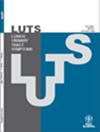The objective of this study is to compare the 3-year continuation rate and discontinuation factors between vibegron and mirabegron in patients with overactive bladder in a rehabilitation hospital in Japan.
The 3-year continuation rate of the target drugs and reasons for discontinuation as well as patients' backgrounds and adverse effects were evaluated retrospectively from the medical records between September 2018 and December 2020. After selecting patients according to our inclusion and exclusion criteria, 136 cases taking mirabegron and 82 taking vibegron were adjusted for intergroup variability by propensity score matching. We performed Cox proportional hazards regression for the 3-year continuation rate and Fine-Gray proportional hazards regression for the 3-year cumulative incidence of discontinuation events. Subgroup analysis was also performed.
Approximately 70% of the patients analyzed had neurogenic overactive bladder. The 3-year continuation rate was 65.2% in vibegron and 30.3% in mirabegron, and the hazard ratio was 0.41 (95% confidence interval: 0.25–0.68, p < 0.001) as for an incidence of discontinuation events of vibegron against mirabegron. The incidence of discontinuation due to inadequate efficacy was 22.7% in vibegron and 47.0% in mirabegron, and similarly the hazard ratio was 0.43 (95% confidence interval: 0.23–0.80, p < 0.01). In the subgroup analysis, vibegron continued significantly more than mirabegron for the 3-year continuation rate in non-neurogenic overactive bladder (p < 0.001), in spontaneous voiding (p < 0.001), in anticholinergic combination (p = 0.0017), in female (p < 0.001), and in 70 years or older (p = 0.0028). Additionally, a significant interaction was observed regarding the methods of emptying urine (p = 0.0066).
Vibegron was superior to mirabegron in the 3-year continuation rate of administration with a fewer discontinuation due to inadequate efficacy in a patient population with relatively high rates of neurogenic overactive bladder.


